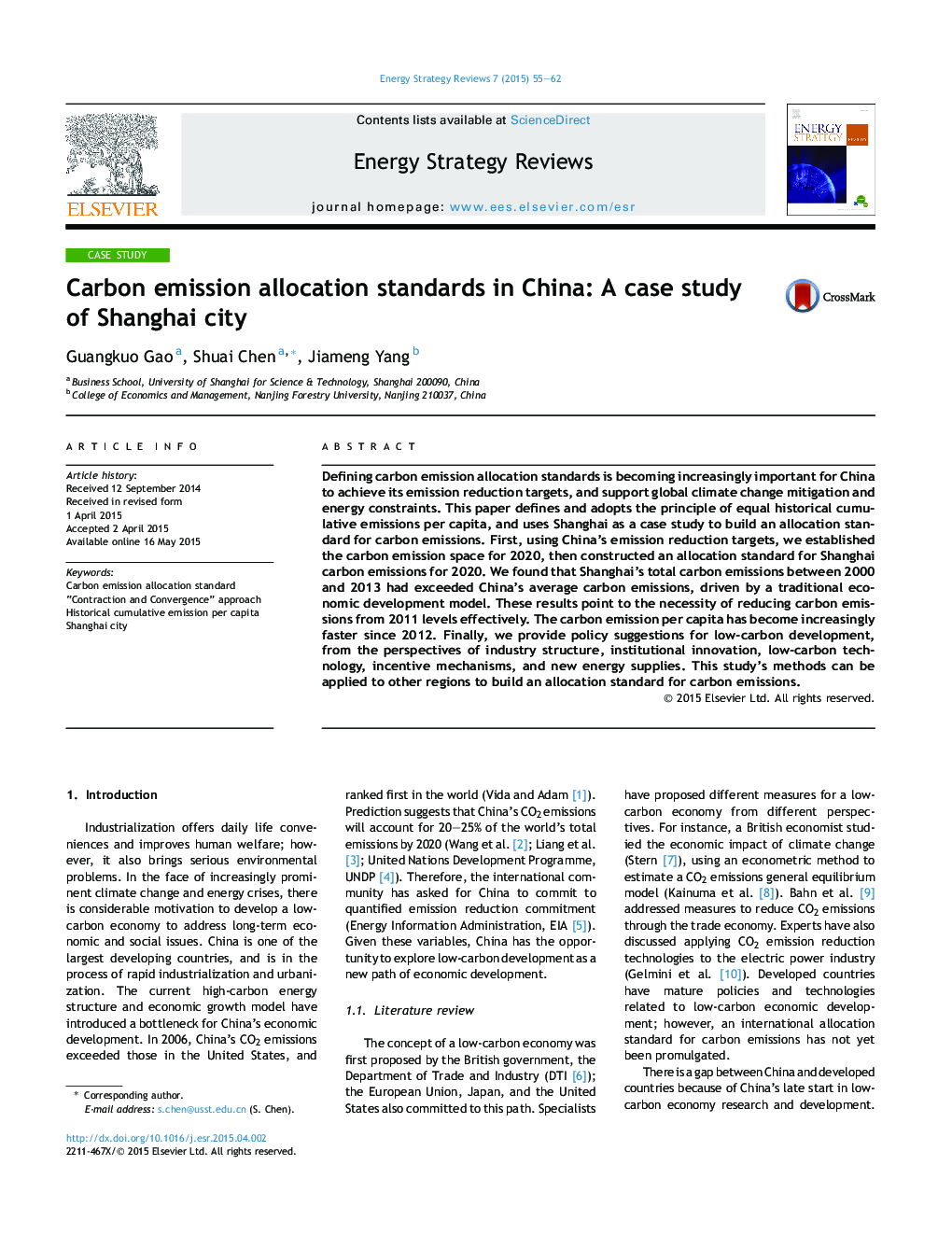| کد مقاله | کد نشریه | سال انتشار | مقاله انگلیسی | نسخه تمام متن |
|---|---|---|---|---|
| 1029791 | 1483531 | 2015 | 8 صفحه PDF | دانلود رایگان |
• The allocation standard for carbon emissions in the paper is different from the Panda Standard and the China Voluntary Carbon Emission Reduction Standard. We adopt the principle of equal historical cumulative emissions per capita and take Shanghai as the case to build an allocation standard for carbon emissions.
• According to China's emission reduction targets, we work out the carbon emission space by 2020, then construct an allocation standard for carbon emissions of Shanghai by 2020.
• The total carbon emissions in Shanghai during 2000–2013 have overpassed China's average carbon emissions due to the traditional economic development model.
• To achieve the emission reduction target, we give the detailed policy suggestions from the perspective of industry structure, institution innovation, low-carbon technology, incentive mechanism and new energy supply respectively.
Defining carbon emission allocation standards is becoming increasingly important for China to achieve its emission reduction targets, and support global climate change mitigation and energy constraints. This paper defines and adopts the principle of equal historical cumulative emissions per capita, and uses Shanghai as a case study to build an allocation standard for carbon emissions. First, using China's emission reduction targets, we established the carbon emission space for 2020, then constructed an allocation standard for Shanghai carbon emissions for 2020. We found that Shanghai's total carbon emissions between 2000 and 2013 had exceeded China's average carbon emissions, driven by a traditional economic development model. These results point to the necessity of reducing carbon emissions from 2011 levels effectively. The carbon emission per capita has become increasingly faster since 2012. Finally, we provide policy suggestions for low-carbon development, from the perspectives of industry structure, institutional innovation, low-carbon technology, incentive mechanisms, and new energy supplies. This study's methods can be applied to other regions to build an allocation standard for carbon emissions.
Journal: Energy Strategy Reviews - Volume 7, April 2015, Pages 55–62
